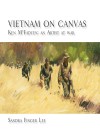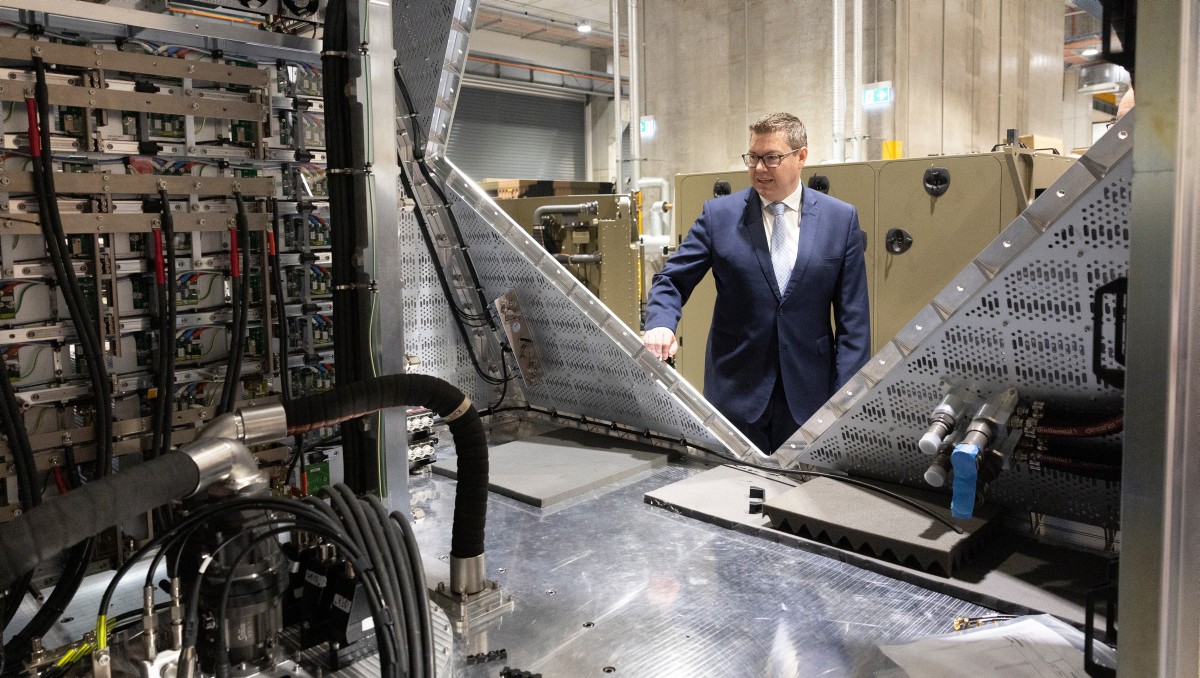Book Review - Vietnam on Canvas – Ken McFadyen, an Artist at War
Vietnam on Canvas – Ken McFadyen, an Artist at War,
Written by: Sandra Finger Lee, Barrallier Books, Canberra, 2010,
ISBN 9780980663303
Reviewed by: Brigadier David Webster
Sandra Finger Lee’s book admirably combines Ken McFadyen’s art and the story of his service with the Army in Vietnam as an official war artist; though there is much more to this book than the title suggests. For me, the portrayal of the artist’s life, from the time he was appointed as a Vietnam war artist at the age of 35 through to his untimely death from a heart attack thirty-one years later while fighting a bush fire on his Victorian country property, is as much of interest as what he witnessed and its effect on him as depicted in his art.
To do his job effectively, McFadyen first had to become a soldier—and an infantry soldier in particular. No one gets a free ride in an infantry battalion especially one that is at war. McFadyen would have been tested by his infantry colleagues to ensure that if he did become engaged in combat he would not be a liability. He obviously passed with flying colours.
Embracing this most demanding of military professions enabled him to see and record the events that characterised the conflict through the eyes of those who prosecuted the war at the ‘sharp end’. This can be seen in his portrayal of the fighting, the movement of the soldiers, their major weapons systems (especially the ubiquitous Iroquois helicopter), the environment in which they worked and the exhaustion they felt in a war with little opportunity for proper rest. His vivid use of colour in portraying the evergreen tropical vegetation in which most action took place acts as a footnote to each remembered event he witnessed.
Finger-Lee skilfully tells his story and hints at a close relationship with the artist to establish herself as confidante in coaxing from him at least some of his innermost feelings—something soldiers tend not to do except to other soldiers who have shared similar experiences. The liberal use of quotes from McFadyen gives the impression, at times, that one is reading an autobiographical account of the artist’s experiences.
There is mystery too in his paintings. In the cover, for example, the soldiers are all carrying their weapons in their left hands while in other scenes no one is wearing a watch when every soldier did in fact have a watch which was considered a critical item of equipment. There is mystery too surrounding the disappearance of a considerable amount of his work; what happened to the paintings that were removed from his farm by persons unknown? And what do the letters sent to the head of the Australian War Memorial contain? Why did he ask that they not be opened for thirty years?
Like so many others, the Ken McFadyen who left Australia in August 1967 was not the same man who returned following his service. And it is unlikely that the change process ceased on his return in March 1968—it would have continued; and so, as he changed, the interpretation and expression of what he had seen and how he portrayed it would also have changed. Alas, the missing artworks, incomplete paintings and sketches deny us the opportunity to see how this played out.
In explaining the discomfort that so often accompanies armed conflict, I was curious to read that McFadyen at one point felt extreme cold. He refers to an operation in which D Company 7 RAR was led into a Viet Cong stronghold and reflects that ‘you get to know yourself very, very well on a mission like that’. As a young National Service platoon commander with D Company, I participated in the incident to which he refers. The company was inserted into a Landing Zone that was over a foot-deep in water and then commenced an all day approach march in the pouring rain to attack a Viet Cong camp. Guided by two SAS troopers, we attacked the camp very late in the afternoon with two platoons and, after a two-hour battle in which the company suffered two KIA and twenty-two WIA, the camp was secured and the long wait for daylight began. A further twelve hours of being wet, cold and hungry in the total blackness of a rain-sodden forest passed before the light of dawn and the commencement of the drying out process. Our discomfort was exacerbated by the rotor downwash from the DUSTOFF helicopters hovering over us for over three hours as the dead and wounded were lifted out. Although I recall there were some extra personnel with the company on that operation, I was completely unaware until reading this book that Ken McFadyen was one of them.
The chapter on ‘photographer versus artist’ resonates with me especially. A colleague and I spent a number of years compiling a pictorial history of 7 RAR’s two tours of duty in South Vietnam and over that time poured over literally thousands of photos to depict the battalion’s experiences of war. As Finger-Lee says, the photograph captures a moment but the war artist’s snapshot in time, seen through his mind’s eye, is processed in the context of his own experience to create an image unique to the artist. I believe McFadyen’s paintings captured the Vietnam War with a strength and vitality that accurately reflect my memories of that period of the war.
I found reading Finger Lee’s account of Ken McFadyen’s experience as a member of an infantry battalion and war artist very rewarding. Knowing something of Ken McFadyen’s experience in Vietnam as the longest serving of only two official war artists of the ten-year Australian involvement in the Vietnam War, allows me to see his work in a new light. Perhaps his missing paintings will one day come to light—and it is only eighteen years until the message in his embargoed letters to the AWM can be revealed.



